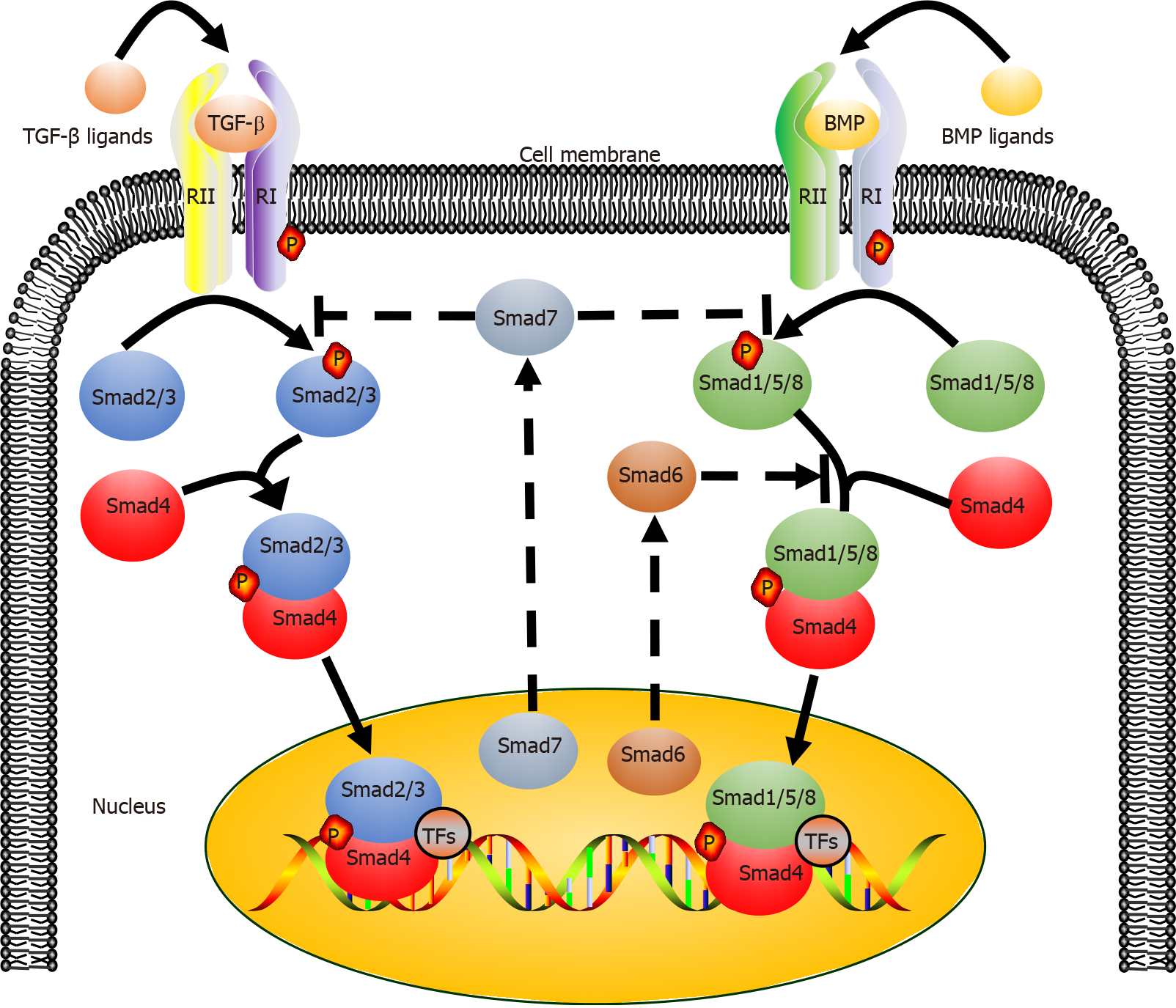Copyright
©©The Author(s) 2022.
World J Stem Cells. Jan 26, 2022; 14(1): 41-53
Published online Jan 26, 2022. doi: 10.4252/wjsc.v14.i1.41
Published online Jan 26, 2022. doi: 10.4252/wjsc.v14.i1.41
Figure 2 Transforming growth factor-β/mothers against decapentaplegic homolog 4 and bone morphogenetic protein/mothers against decapentaplegic homolog signaling pathways.
Activated transforming growth factor-β (TGF-β) ligands or bone morphogenetic protein ligands bind to type II receptor (TβRII) on the cell membrane and recruit type I receptors (TβRI), forming receptor complexes (TβRI and TβRII). Phosphorylated receptor complexes phosphorylate mothers against decapentaplegic homolog (Smad)2/3 and Smad1/5/8 (R-Smads). Smad4 (Co-Smad) binds with R-Smads to form two different complexes (Smad4/Smad2/3 and Smad4/Smad1/5/8). The heteromeric complexes are translocated to the nucleus, where they regulate the expression of specific genes. Smad6 and Smad7 (I-Smads), which are typically located in the nucleus, can enter the cytoplasm upon activation and regulate the transcriptional activity of the TGF-β signaling pathway. Smad6 mainly competes with R-Smads for binding Smad4 to inhibit transcriptional activity, while Smad7 inhibits transcriptional activity mostly by preventing the phosphorylation of R-Smads. BMP: Bone morphogenetic protein; TFs: Transcription factors; Smad1-8: Mothers against decapentaplegic homolog 1-8; TGF-β: Transforming growth factor-β.
- Citation: Dai CJ, Cao YT, Huang F, Wang YG. Multiple roles of mothers against decapentaplegic homolog 4 in tumorigenesis, stem cells, drug resistance, and cancer therapy. World J Stem Cells 2022; 14(1): 41-53
- URL: https://www.wjgnet.com/1948-0210/full/v14/i1/41.htm
- DOI: https://dx.doi.org/10.4252/wjsc.v14.i1.41









